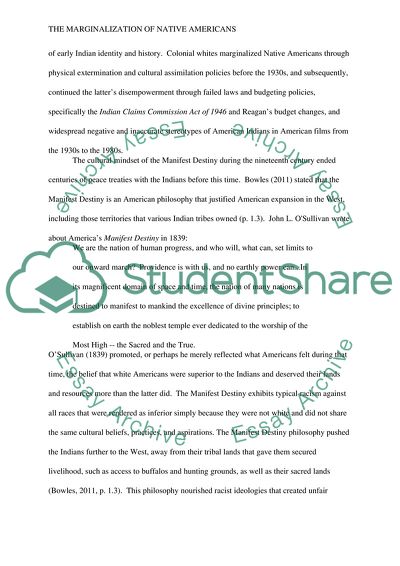Cite this document
(The Marginalization of Native Americans Before and After the 1930s Literature review Example | Topics and Well Written Essays - 2500 words, n.d.)
The Marginalization of Native Americans Before and After the 1930s Literature review Example | Topics and Well Written Essays - 2500 words. https://studentshare.org/history/1836405-native-americans-finale-paper
The Marginalization of Native Americans Before and After the 1930s Literature review Example | Topics and Well Written Essays - 2500 words. https://studentshare.org/history/1836405-native-americans-finale-paper
(The Marginalization of Native Americans Before and After the 1930s Literature Review Example | Topics and Well Written Essays - 2500 Words)
The Marginalization of Native Americans Before and After the 1930s Literature Review Example | Topics and Well Written Essays - 2500 Words. https://studentshare.org/history/1836405-native-americans-finale-paper.
The Marginalization of Native Americans Before and After the 1930s Literature Review Example | Topics and Well Written Essays - 2500 Words. https://studentshare.org/history/1836405-native-americans-finale-paper.
“The Marginalization of Native Americans Before and After the 1930s Literature Review Example | Topics and Well Written Essays - 2500 Words”. https://studentshare.org/history/1836405-native-americans-finale-paper.


